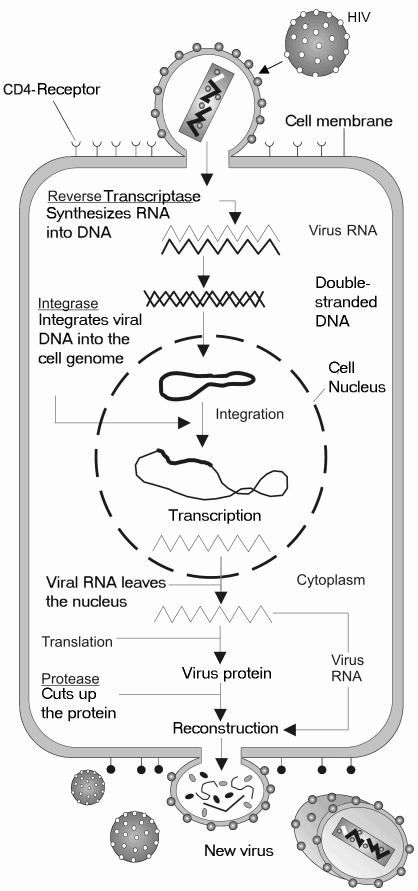 | ||
Tissue tropism is the cells and tissues of a host which support growth of a particular virus or bacteria. Some bacteria and viruses have a broad tissue tropism and can infect many types of cells and tissues. Other viruses may infect primarily a single tissue. For example rabies virus affects primarily neuronal tissue.
Contents
Influencing factors
Factors influencing viral tissue tropism include:
The cellular receptors are the proteins found on a cell or viral surface. These receptors are like keys allowing the viral cell to fuse with a cell, or attach itself to a cell. The way that these proteins are acquired is through similar process to that of an infection cycle.
How 'tropic' tissue is acquired
Tissue tropism develops in the following stages:
Example: HIV has a gp120 which is precisely what the CD4 marker is on the surface of the macrophages and T cells, thus HIV can enter T cells and macrophages
